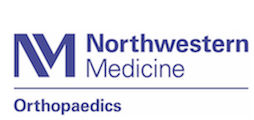|
|

|
« Back
I think I might be part of an experiment in surgery, so I want to find out how often other people are having what I'm having. The surgery is a lumbar spinal fusion. The experiment is to use some kind of bone growth protein to speed up the healing process. Is this type of surgery standard or certified or experimental or what?
|
|
Bone morphogenetic protein known as BMP-2 or BMP for short is a growth factor (protein) that helps bone heal and promotes bone fusion. BMP reportedly helps speed up the recovery rate after spinal fusion. BMP is designed to promote bone formation by setting up an inflammatory reaction. This type of enhancer was developed to avoid problems that occur with traditional bone grafting.
This type of product has been around now for at least 10 years. It first came out in 2002 when the Food and Drug Administration (FDA) approved its used for lumbar fusions. There are three distinct advantages to BMP: 1) improves success of fusion, 2) fewer problems because bone is not harvested from the patient, and 3) lower costs with a one-step surgical procedure that doesn't involve bone harvest.
There are two types of BMP products available for use in spinal fusion. It is definitely no longer "experimental." In fact, according to a recent (very large) study sponsored by the Scoliosis Research Society, about one-fifth (21 per cent) of all spinal fusions are done with BMP. It can be used with children and adults, though the most likely candidate is the older adult who may not produce enough new bone for healing.
The surgeon most likely explained the various options: bone graft harvested from your own bone, bone graft material from a donor bank, and/or the use of BMP. The pros and cons of each type of bone material may not have been discussed with you. Don't hesitate to bring this question up to your surgeon for a better understanding of the procedure planned for you.
|
References:
|
|
|
« Back
|
|
|
|
*Disclaimer:*The information contained herein is compiled from a variety of sources. It may not be complete or timely. It does not cover all diseases, physical conditions, ailments or treatments. The information should NOT be used in place of visit with your healthcare provider, nor should you disregard the advice of your health care provider because of any information you read in this topic. |
 | All content provided by eORTHOPOD® is a registered trademark of Mosaic Medical Group, L.L.C.. Content is the sole property of Mosaic Medical Group, LLC and used herein by permission. |
|
